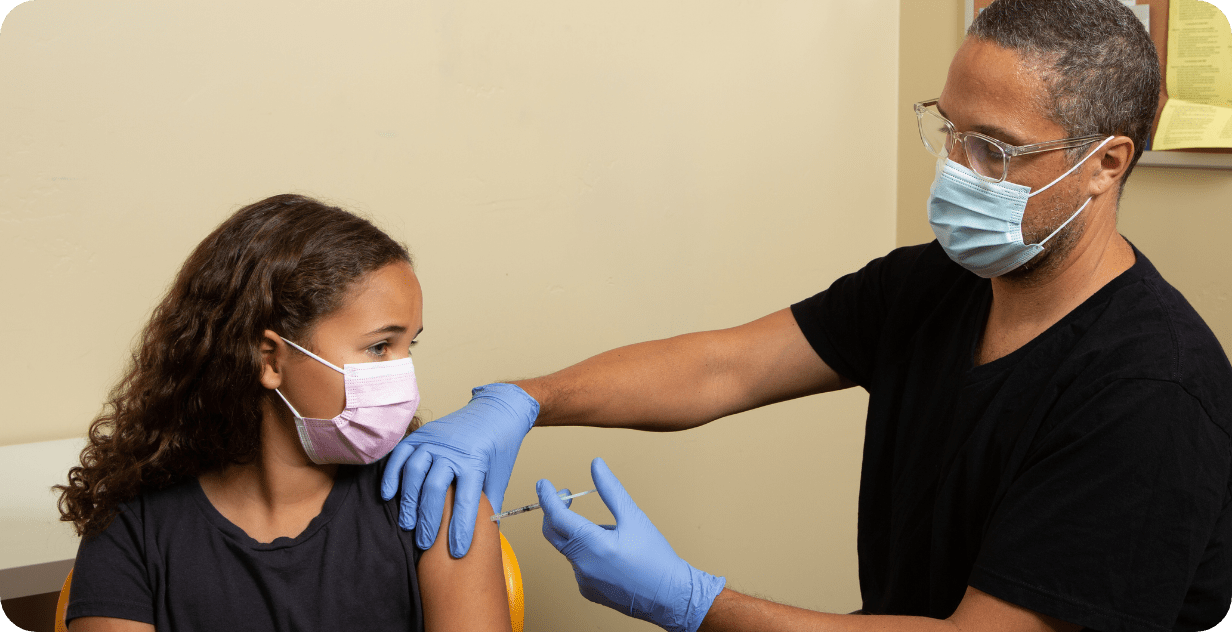
OPA extends our thanks to Merck Canada for their assistance
in the realization of this signature learning series (SLS), however all content was solely developed by OPA.

Impacts of HPV
The human papillomavirus (HPV) is highly contagious and can be transmitted through skin-to-skin sexual contact (penetration not required) in the genital area or through genital, anal, or oral sex. It is estimated that 75% of Canadians will develop at least one HPV infection in their lifetime, and the highest rates of infection are observed among young people ages 15 to 24.1
It is estimated that 75% of Canadians will develop at least one HPV infection in their lifetime.
HPV affects both genders, and can cause genital warts and many types of cancers:

HPV can cause oropharyngeal (tonsils & vocal cords, tongue, throat) and other head and neck cancers, as well as cancers of the anus, cervix, vulva, vagina, penis.
The magnitude and effects of HPV-related cancers are devastating, yet there is currently no cure. There are over 200 types of HPV, and HPV is linked to 90% of cases of genital warts.1 Additionally, approximately 90% of cervical cancers are believed to be caused by HPV.3 As trusted and knowledgeable healthcare providers, pharmacy professionals can help prevent HPV-related cancers by discussing the significance of the HPV vaccine, educating patients about the risks of HPV-related cancers, and encouraging patients to regularly get screened through Papanicolaou and HPV tests. Furthermore, pharmacy professionals can work collaboratively with other health care providers to refer patients who may be experiencing symptoms of cervical or other HPV-related cancers to encourage early detection and treatment.

Approximately 90% of cervical cancers are believed to be caused by HPV.3
Eradicating Cervical Cancer – A Global Initiative
Cervical cancer has been identified as a public health problem that can be eliminated over time through consistent vaccination against HPV. Since vaccination is most effective if performed prior to exposure to the HPV virus, a sustained vaccination campaign that vaccinates children before they become sexually active will have a significant impact on reducing the number of deaths due to cervical cancer.
The World Health Organization’s (WHO) “Global strategy to accelerate the elimination of cervical cancer as a public health problem” recommends a 90-70-90 model, whereby:
- 90% of girls are fully vaccinated with the HPV vaccine by 15 years of age
- 70% of women are screened with a high-performance test by 35 years of age and again by 45 years of age
- 90% of women identified with cervical disease receive treatment
Health Canada has joined the WHO in this aspirational goal, releasing their “Action Plan for the Elimination of Cervical Cancer in Canada” and Canadian pharmacy professionals will play a crucial role in ensuring equity and access to HPV vaccination. Working alongside other healthcare professionals who provide care to adolescents, pharmacy professionals can assist with achieving the National Advisory Committee on Immunization’s (NACI) goal of ensuring 90% of 17-year-olds are fully vaccinated with the HPV vaccine by 2025.
How Pharmacy Professionals Can Play a Role
Proximity and access are critical aspects of the patient experience with health care. With pharmacy professionals being in close and regular contact with patients through their roots in communities. They can assess and discuss the protection the HPV vaccine provides. As trusted and trained health care providers, pharmacy professionals can address vaccine hesitancy while also simultaneously sharing the risks of not getting vaccinated, including spreading or acquiring an HPV infection that can potentially become cancerous. Approved by Health Canada, HPV vaccines are indicated for patients up to age 45 and are very safe and offer protection against HPV. Electronic medical record systems like the clinical viewer provide access to digital health records which pharmacy professionals can utilize to follow up with patients that have missed a dose or are eligible. In some cases, patients can receive the HPV vaccine directly from an injection-trained pharmacist without a prescription, or a prescription may be required for insurance. Patients can purchase the vaccine privately at some pharmacies and sometimes it may be covered through private insurance which can significantly reduce the cost. Initiating the conversation about immunization with patients is the first step to ensuring that patients remain up-to-date and are able to make an informed decision.
Let’s Get Vaccinations Back on Track
The impacts of the COVID-19 pandemic have caused hindrances within the healthcare system which reinforces the need to accelerate efforts to protect against HPV-related cancers. The National Advisory Committee on Immunization (NACI) has set a target immunization of 90% HPV vaccination rate for adolescents 17 years of age by 2025.2 During the COVID-19 pandemic, many school-aged youths missed the opportunity to receive HPV vaccinations through publicly funded school-based programs, leaving them vulnerable to the virus. Despite the impact of the pandemic, HPV vaccination rates among 14-year-olds increased from 80% in 2019 to 84% in 2021. Ongoing efforts to increase vaccine uptake will help NACI reach its goal to ensuring overall reduced incidences of HPV-related cancers.4


A vital component of HPV vaccinations is educating the public about the dangers of HPV-related cancers.
To help increase the rate of HPV vaccination, there are numerous disparities and public perceptions that need to be addressed and this requires involvement from government, key stakeholders and an examination of current policies. The publicly funded school-based vaccination programs are a good starting point, but may not capture entire populations, especially those with lower incomes and individuals living in remote areas. A vital component of HPV vaccinations is educating the public about the dangers of HPV-related cancers, the benefits of the vaccine and the coverage it provides, as well as addressing vaccine hesitancy. A report done by the Canadian Partnership Against Cancer found that 53% of parents are concerned about the safety of the vaccine on their children.5 Making HPV vaccines publicly funded through primary care providers and enhancing the participation of pharmacy professionals can significantly increase uptake and reduce economic burdens as high immunization rates coupled with regular screening can prevent HPV-related cancer cases. Pharmacy professionals are in proximity to patients, with approximately 95% of Canadians living within five kilometres of a community pharmacy.6 As seen with the COVID-19 pandemic, the public perception of pharmacy teams has shifted, and patients trust them as health care providers. They can consult with patients and remind them of the importance of vaccinations while also addressing vaccine hesitancy. Critical changes are needed so that Canada can reach its target HPV immunization rate, and pharmacy professionals are equipped and ready to play a larger role in providing solutions.
References
- “What is HPV?” Society of Obstetricians and Gynaecologists of Canada, https://www.hpvinfo.ca/what-is-hpv/.
- “HPV immunization for the prevention of cervical cancer.” Canadian Partnership Against Cancer, https://www.partnershipagainstcancer.ca/topics/hpv-immunization-policies/.
- Caird H, Simkin J, Smith L, Van Niekerk D, Ogilvie G. The Path to Eliminating Cervical Cancer in Canada: Past, Present and Future Directions. Current Oncology. 2022; 29(2):1117-1122. https://doi.org/10.3390/curroncol29020095.
- Highlights from the 2021 childhood National Immunization Coverage Survey (cNICS). Public Health Agency of Canada. https://www.canada.ca/en/public-health/services/immunization-vaccines/vaccination-coverage/2021-highlights-childhood-national-immunization-coverage-survey.html
- “HPV immunization policies: Public perceptions of HPV immunizations.” Canadian Partnership Against Cancer, https://www.partnershipagainstcancer.ca/topics/hpv-immunization-policies/public-perceptions/.
- McGillivray, Kate. “Ontario Should Allow More Routine Vaccinations at Pharmacies, Says Pharmacy Association.” CBC News, 24 Oct. 2021, https://www.cbc.ca/news/canada/toronto/ontario-vaccinations-pharmacies-record-keeping-1.6222473.
